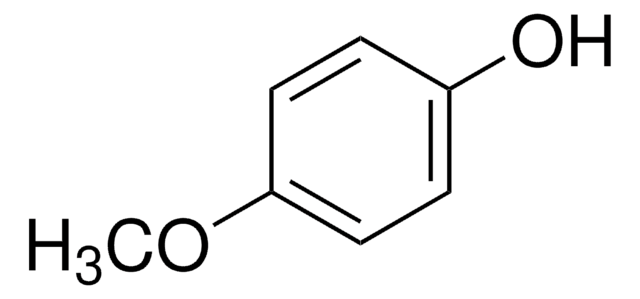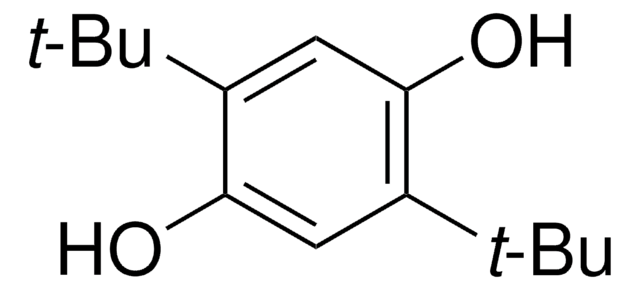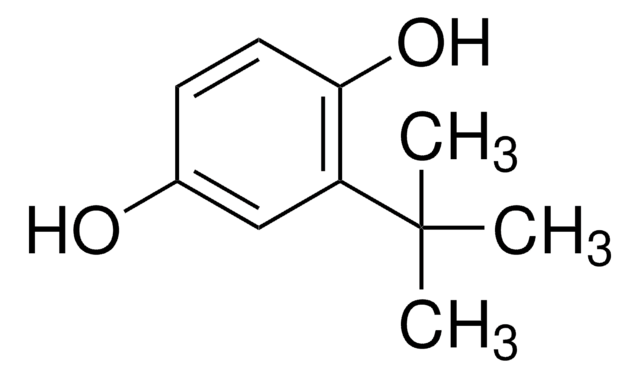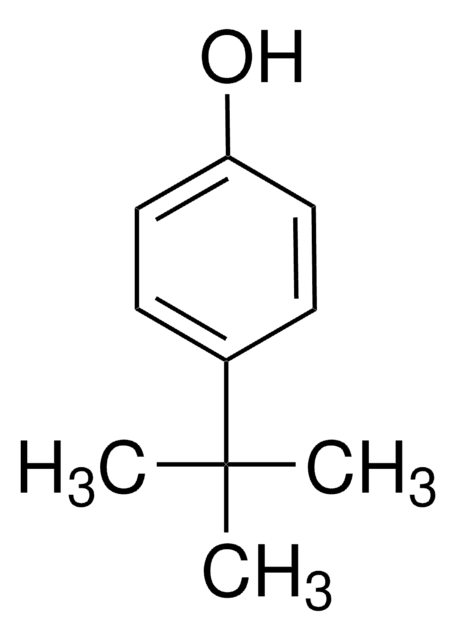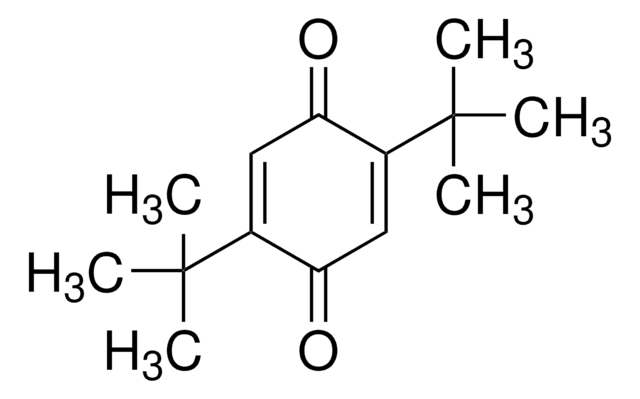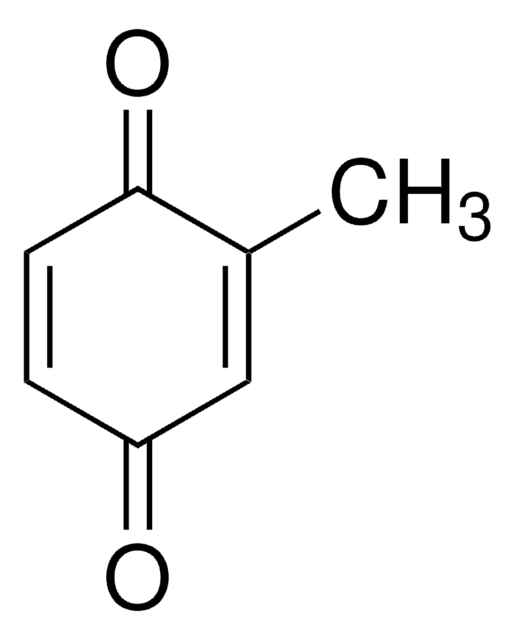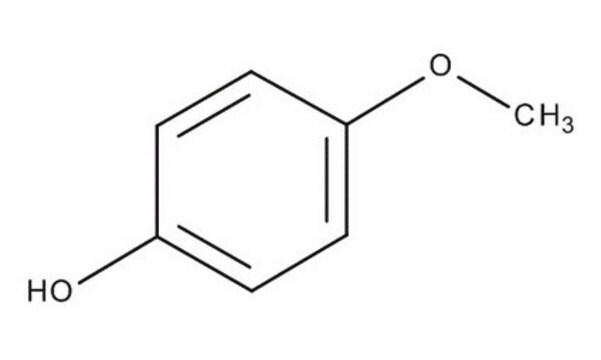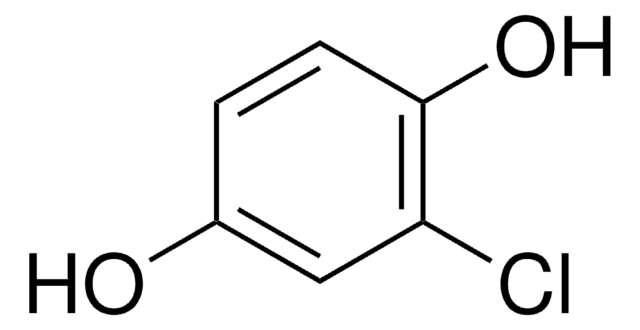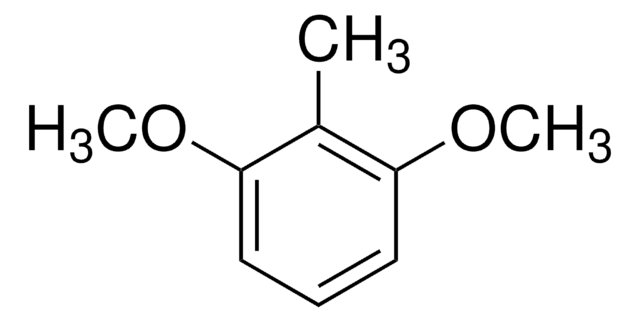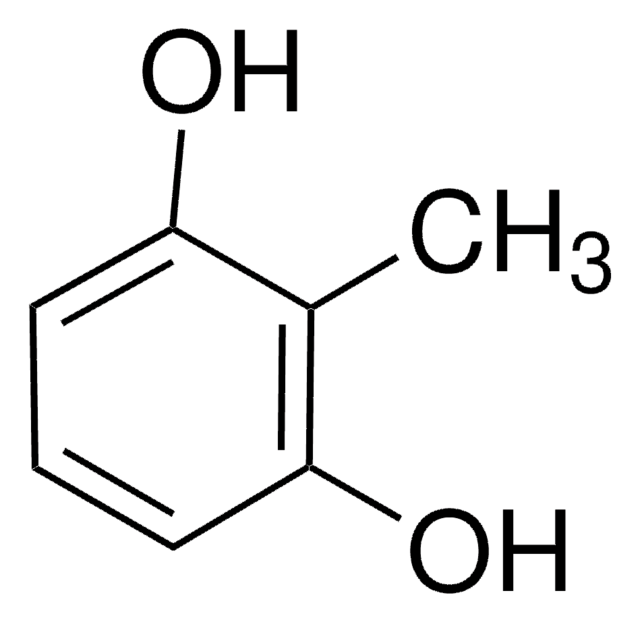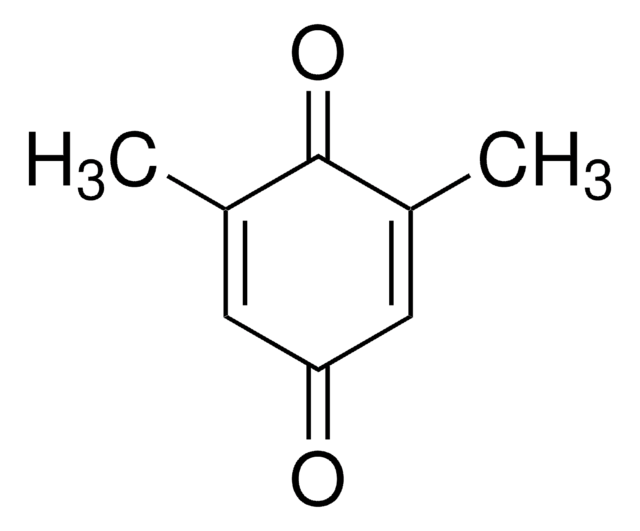112968
Methylhydroquinone
99%
Sinónimos:
Toluhydroquinone
About This Item
Productos recomendados
Nivel de calidad
Ensayo
99%
Formulario
solid
temp. de autoignición
851 °F
mp
128-130 °C (lit.)
cadena SMILES
Cc1cc(O)ccc1O
InChI
1S/C7H8O2/c1-5-4-6(8)2-3-7(5)9/h2-4,8-9H,1H3
Clave InChI
CNHDIAIOKMXOLK-UHFFFAOYSA-N
¿Está buscando productos similares? Visita Guía de comparación de productos
Categorías relacionadas
Descripción general
Aplicación
- A semiflexible thermotropic polyester via polycondensation reaction with 4,4′-sebacoyldioxydibenzoyl chloride.
- A sesquiterpene (±)-helibisabonol A.
- poly{hexakis[(methyl)(4-hydroxyphenoxy)]cyclotriphosphazene} by reacting with hexachlorocyclotriphosphazene.
- 6-Hydroxy-4,7-dimethyl-2H-1-benzopyran-2-one by treating with ethyl acetoacetate in the presence of H2SO4 as a catalyst.
Acciones bioquímicas o fisiológicas
Palabra de señalización
Danger
Frases de peligro
Consejos de prudencia
Clasificaciones de peligro
Aquatic Acute 1 - Aquatic Chronic 1 - Eye Dam. 1 - Skin Corr. 1A - Skin Sens. 1 - STOT SE 3
Órganos de actuación
Respiratory system
Código de clase de almacenamiento
8A - Combustible corrosive hazardous materials
Clase de riesgo para el agua (WGK)
WGK 2
Punto de inflamabilidad (°F)
341.6 °F - closed cup
Punto de inflamabilidad (°C)
172 °C - closed cup
Equipo de protección personal
dust mask type N95 (US), Eyeshields, Faceshields, Gloves
Elija entre una de las versiones más recientes:
¿Ya tiene este producto?
Encuentre la documentación para los productos que ha comprado recientemente en la Biblioteca de documentos.
Los clientes también vieron
Nuestro equipo de científicos tiene experiencia en todas las áreas de investigación: Ciencias de la vida, Ciencia de los materiales, Síntesis química, Cromatografía, Analítica y muchas otras.
Póngase en contacto con el Servicio técnico